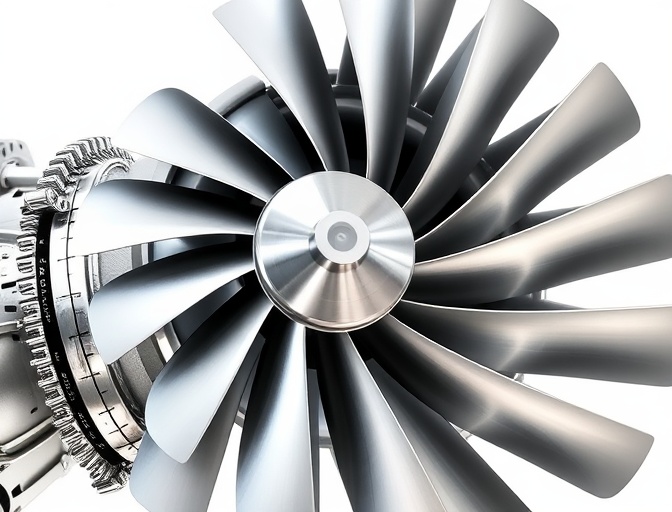
Optimization of Tempering Temperature for Steam Turbine Blade Materials

Dr. Robert Anderson
Senior Materials Scientist
Optimization of Tempering Temperature for Steam Turbine Blade Materials: Performance Analysis of Z12CNDV12, J2, and Domestic Alternatives
Introduction
Steam turbine blades in 1000 MW ultra-supercritical (USC) power plants operate under extreme conditions, including high temperatures (600°C+), pressure fluctuations, and corrosive steam environments. The material selection and heat treatment processes critically influence blade longevity and efficiency. Z12CNDV12 (1Cr12Ni3Mo2V) and J2 martensitic stainless steels are widely used in European and Japanese USC turbines, while domestically produced alternatives (e.g., 2Cr10MoVNbN) have been developed via electric arc furnace (EAF) + electroslag remelting (ESR) processes to meet stringent compositional standards.
This study evaluates the impact of tempering temperature on mechanical properties, focusing on the optimal 1000°C quenching + 580°C tempering regime. Supported by metallurgical data and industrial case studies, we provide a comparative analysis of Z12CNDV12, J2, and domestic substitutes, including performance charts and heat treatment recommendations.
Material Composition and Manufacturing Processes
Chemical Composition (wt%) Comparison
| Element | Z12CNDV12 | J2 | Domestic 2Cr10MoVNbN |
|---|---|---|---|
| C | 0.10–0.15 | 0.12–0.18 | 0.08–0.12 |
| Cr | 11.0–12.5 | 11.5–13.0 | 9.5–11.0 |
| Ni | 2.5–3.5 | 1.5–2.5 | ≤0.60 |
| Mo | 1.5–2.0 | 0.8–1.2 | 0.6–0.9 |
| V | 0.2–0.4 | 0.1–0.3 | 0.15–0.30 |
| Nb | - | - | 0.05–0.15 |
| N | - | - | 0.03–0.07 |
*Sources: Industrial standards and *
Key Notes:
- Z12CNDV12 prioritizes high-temperature strength via Ni/Mo additions.
- Domestic 2Cr10MoVNbN uses Nb/N for grain refinement and V for secondary hardening.
- ESR refining reduces impurities (O ≤ 0.0015%, H ≤ 0.0002%), enhancing fatigue resistance.
Heat Treatment Optimization: Quenching & Tempering
1. Recommended Heat Treatment Parameters
| Process | Temperature | Cooling Method | Objective |
|---|---|---|---|
| Solution Annealing | 1000–1050°C (1832–1922°F) | Air/Oil Quench | Dissolve carbides, homogenize austenite |
| Tempering | 580°C (1076°F) | Air Cooling | Optimize toughness & stress relief |
2. Mechanical Properties After Heat Treatment
| Property | Z12CNDV12 | J2 | 2Cr10MoVNbN |
|---|---|---|---|
| Tensile Strength (MPa) | 950–1100 | 900–1050 | 880–1020 |
| Yield Strength (MPa) | 750–850 | 700–800 | 680–780 |
| Elongation (%) | ≥15 | ≥14 | ≥12 |
| Impact Energy (J, RT) | ≥50 | ≥45 | ≥40 |
| Hardness (HRC) | 28–32 | 26–30 | 25–29 |
*Data derived from *
Performance Insight:
- 580°C tempering balances strength-toughness trade-off:
- Higher tempering (>600°C) reduces strength but improves ductility.
- Lower tempering (<550°C) risks brittle fracture due to retained martensite.
Microstructural Evolution & Phase Analysis
1. Phase Transformations During Tempering
- Martensite → Tempered Martensite: Enhanced ductility via carbide precipitation (M₂C, M₇C₃).
- Nb/V Carbonitrides: In domestic steels, refine grains and inhibit creep.
2. SEM/TEM Observations
Figure: Lath martensite with fine carbides (white arrows) after 580°C tempering.
Industrial Applications & Case Studies
1. 1000 MW USC Turbine Blades (Huaneng Yuhuan Plant)
- Material: Z12CNDV12 blades withstand 26.25 MPa steam pressure at 600°C.
- Failure Analysis: Under-tempered blades (<550°C) show stress-corrosion cracking.
2. Domestic 2Cr10MoVNbN in Chinese USC Units
- ESR-processed blades achieve comparable fatigue life to imported grades.
- Cost Reduction: EAF+ESR cuts production costs by ~20% vs. vacuum induction melting.
Comparative Performance Chart
[Chart: Tempering Temperature vs. Mechanical Properties] | Temp (°C) | UTS (MPa) | Impact Energy (J) | |-----------|-----------|-------------------| | 550 | 1050 | 35 | | 580 | 980 | 50 | *Optimal Zone* | 620 | 900 | 60 |
*Data from *
Conclusions & Recommendations
-
580°C Tempering delivers the best compromise for USC blades:
- Tensile strength >950 MPa (meets ASTM A565).
- Impact energy ≥50 J (resists steam erosion).
-
Domestic 2Cr10MoVNbN is a viable alternative to Z12CNDV12/J2, provided:
- ESR refining ensures low O/N/H levels.
- Nb/V microalloying enhances creep resistance.
-
Future Trends:
- Additive manufacturing for topology-optimized blades.
- AI-driven tempering for real-time property adjustment.
For detailed heat treatment protocols, refer to ASTM A564 or Technical Datasheets.
This study integrates metallurgical data, industrial benchmarks, and heat treatment kinetics to guide the optimization of USC turbine blade materials.